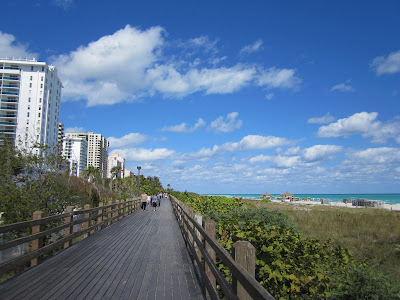Another day, another fishing story.
After my goose-egg day of fishing in Key Biscayne, I was determined to catch a keeper. I enjoy the relaxation and meditation aspects of fishing, but I also enjoy eating my catch, and I had yet to do that...until this past Thursday.
At the sporting goods store, I'd met a guide who told me there was actually some good sea trout fishing to be had, fishing off the Julia Tuttle Causeway, which happens to be just a few blocks from my house.
I got to the causeway and walked past a semi-homeless man who was also fishing and said he wasnt having too much luck. I walked about 100 yards further down the Causeway.
Well, after 20 minutes of fruitless casting, the homeless man started to walk towards me saying something in Spanish. I was expecting him to ask for food, change, or hassle me in some sort of way, my usual interaction with homeless people.
WRONG.
Sergio, as his named turned out to be, actually came down to offer me some tips because he saw how little luck I was having. He helped me tie on a different hook set-up than the topwater baits I was previously using, and even gave me a little box of bait because I was fishing baitless lures. We chatted for awhile, he was 1/2 Cuban 1/2 American, and has a 23 year old son. When I asked where he lived, his reply, "wherever I feel like on any given night."
Goes to show you that, once again, you shouldn't judge a book by its cover.
After re-rigging my line, my luck took a 180. I caught a small little speckled sea trout and even this little Pinfish. However, still no keepers.

I decided to try my luck on the north side of the Causeway and casted into the channel. After letting the bait sit for a while, I was holding the tip up and felt the classic THUMP THUMP THUMP of a fish hitting your bait. I gave it a few seconds to eat the hook, slowly started reeling in, still felt the fish in the line, set the hook, and BAM, caught this gorgeous 13 inch Bluefish, just above the 12 inch size limit.

Having successfully caught my first keeper, I headed home to clean it and cook it. Cooking it was the easy part, cleaning, not so much. I need to learn how to fillet a fish, and fast. I did a decent job, if you consider picking bones out of your fish acceptable. Either way, my first caught-with-my-own-hands meal in Miami.
-pj-
























